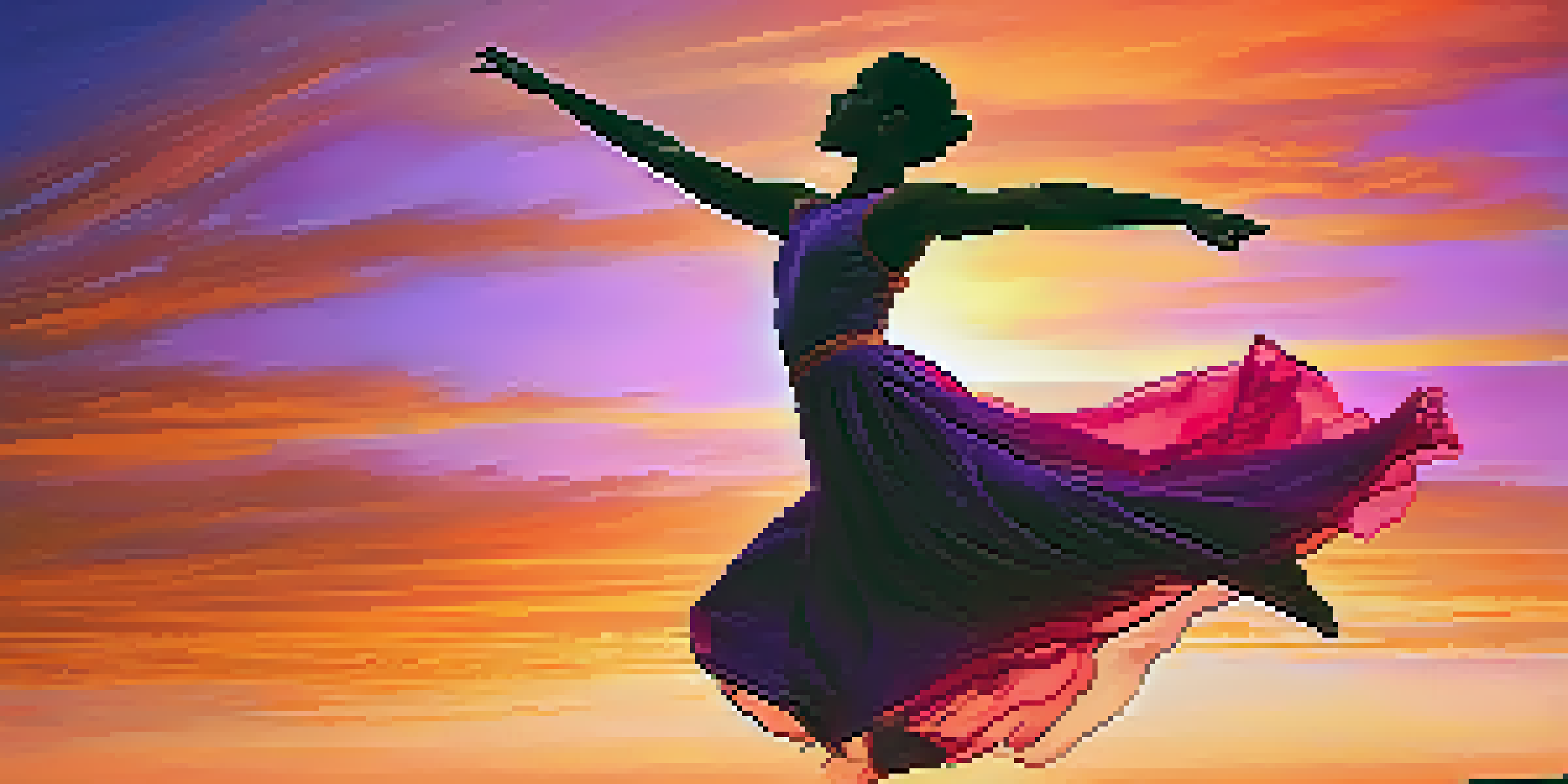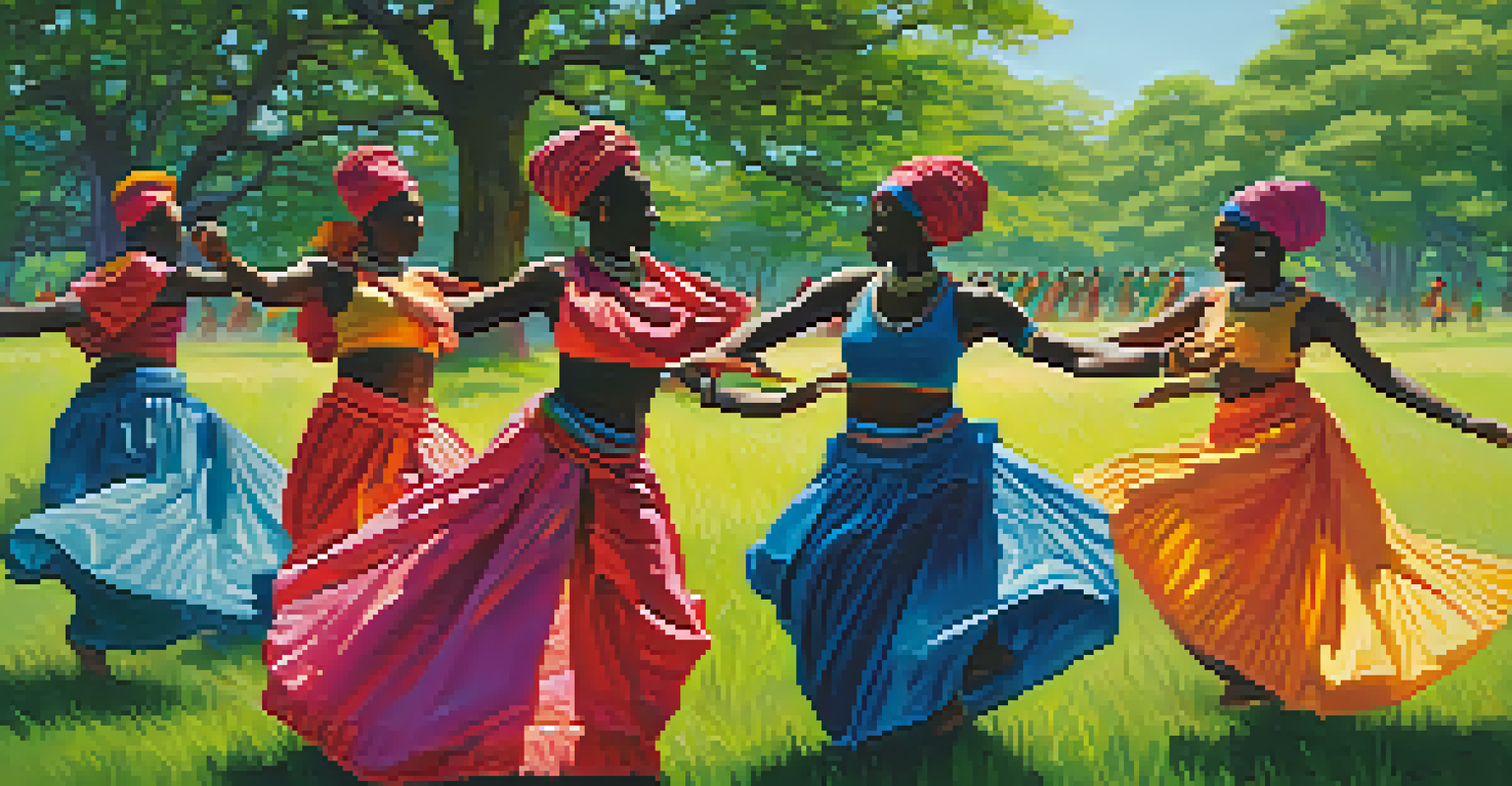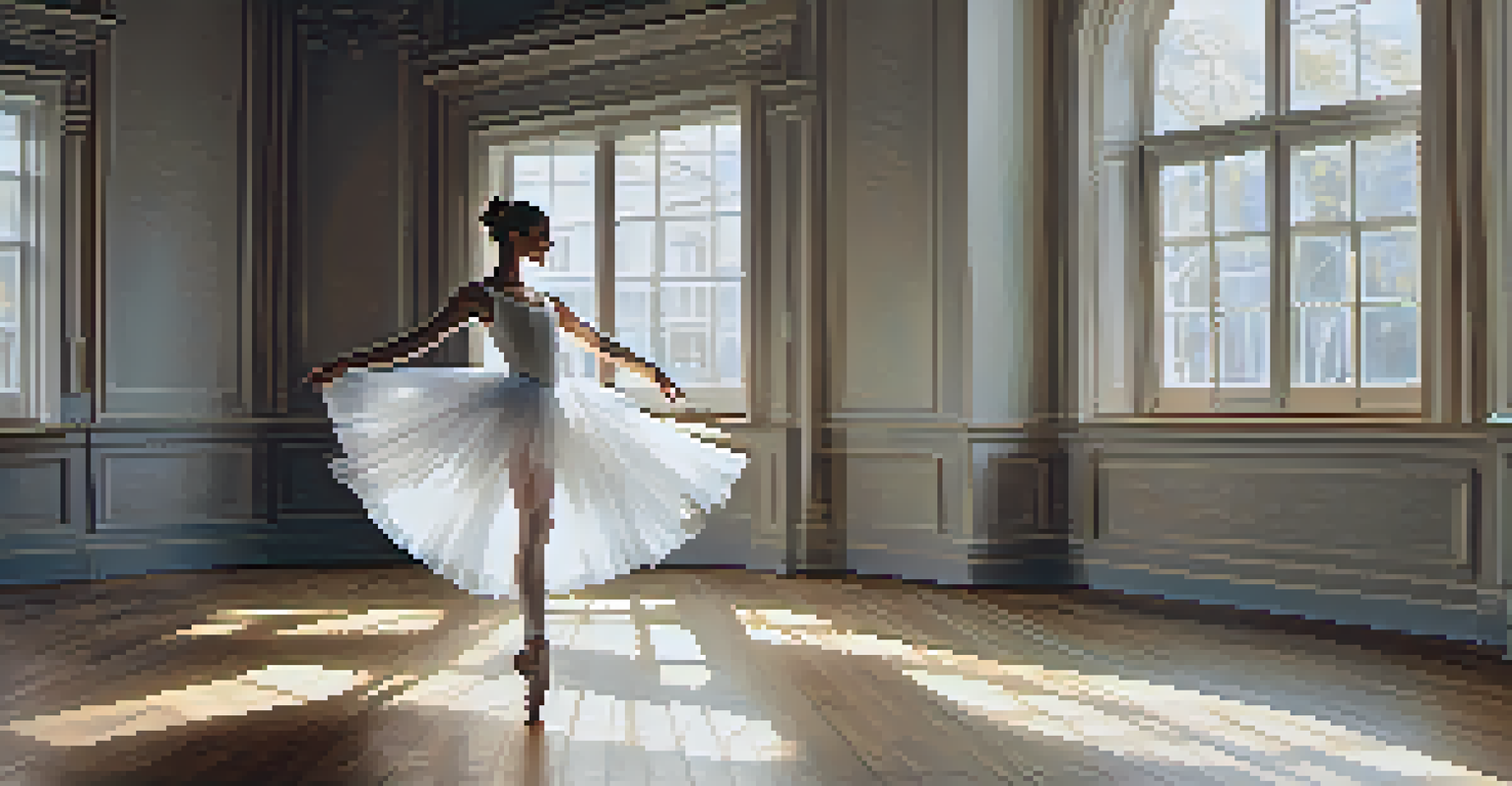The Role of Movement in Expressing Emotions Through Dance

Understanding the Connection Between Movement and Emotion
Movement is a universal language that transcends words, allowing us to express complex emotions. In dance, every gesture, step, and sway conveys feelings, creating a visceral connection between the dancer and the audience. Just like how a smile can brighten someone's day, a simple movement can evoke a myriad of emotions.
Dance is the hidden language of the soul.
Think of how a dancer might arch their back in a moment of sadness, or leap joyfully to represent happiness. These actions tell a story that words often fail to capture. This connection is what makes dance such a powerful medium for emotional expression.
Moreover, the intention behind each movement plays a crucial role in how emotions are conveyed. When a dancer is fully present and connected to their feelings, the audience can sense that authenticity, making the experience even more impactful.
The Emotional Spectrum: From Joy to Grief in Dance
Dance encompasses a wide emotional spectrum, from the heights of joy to the depths of grief. Each dance style offers unique ways to express these emotions. For instance, ballet may depict grace and beauty, while contemporary dance often explores raw and unfiltered feelings.

Consider the way a contemporary dancer might use sharp, aggressive movements to express anger, or soft, flowing movements to convey peace. These choices not only reflect the dancer's emotional state but also resonate deeply with viewers, prompting them to reflect on their own experiences.
Dance as Emotional Expression
Movement in dance conveys complex emotions, creating a deep connection between performers and audiences.
Through movement, dancers can invite the audience into their emotional journey, creating a shared experience that speaks to the heart. This powerful storytelling aspect of dance can evoke empathy and understanding, bridging emotional gaps between performer and audience.
Cultural Influences on Emotional Expression in Dance
Cultural background plays a significant role in how emotions are expressed through dance. Different cultures have distinct movement styles and traditions that reflect their societal values and emotional expressions. For example, traditional African dances often celebrate community and joy, while Indian classical dance may convey deep philosophical ideas and emotional nuances.
The only dancer you should compare yourself to is the one you used to be.
The choreography, music, and even the attire can all contribute to how emotions are portrayed. For instance, the vibrant colors and rhythmic movements in Latin dance can evoke feelings of passion and excitement, while the elegance of a waltz might convey romance and nostalgia.
By exploring these cultural influences, dancers and choreographers can tap into a rich tapestry of emotional expression, creating performances that resonate on multiple levels. This cultural exchange enriches the dance community and fosters a deeper understanding of the human experience.
The Role of Music in Enhancing Emotional Expression
Music and movement go hand in hand, with each enhancing the other's ability to convey emotion. The rhythm, tempo, and melody of a piece can significantly influence a dancer's movement choices and emotional expression. For example, a slow, melancholic tune might inspire gentle, flowing movements, while an upbeat track could encourage energetic and lively choreography.
Dancers often adapt their performances to align with the emotional tone of the music, creating a harmonious blend that captivates the audience. This synergy between music and movement allows for a richer storytelling experience, making the emotions even more palpable.
Cultural Impacts on Dance
Different cultures influence emotional expression in dance, enriching performances with diverse traditions and values.
Moreover, the emotional response to music can vary from person to person, adding another layer of complexity to the dance performance. Each viewer may interpret the same movements in different ways, reflecting their personal experiences and emotions.
Choreography: Crafting Emotional Narratives Through Dance
Choreography serves as the blueprint for emotional expression in dance, guiding how movements are structured to tell a story. A skilled choreographer carefully selects and sequences movements to evoke specific feelings and reactions from the audience. Just as a writer crafts a narrative, a choreographer weaves together movements to create an emotional journey.
For instance, a piece might begin with hesitant, cautious steps to portray uncertainty, gradually evolving into bold, expansive movements that signify empowerment and growth. This progression not only keeps the audience engaged but also mirrors the emotional ups and downs of life.
Choreography can also incorporate moments of stillness, which can be just as powerful as movement. These pauses allow both the dancer and the audience to reflect on the emotions being expressed, creating a deeper connection to the performance.
Improvisation: Spontaneous Emotional Expression in Dance
Improvisation in dance allows for spontaneous emotional expression, enabling dancers to connect with their feelings in real-time. This unscripted approach can lead to powerful moments of authenticity, as dancers respond instinctively to their emotions and the environment around them. It's like having a conversation without a script, where the body takes the lead.
Many dancers find that improvisation helps them tap into emotions they may not have been able to express otherwise. The freedom to move without predetermined steps creates a safe space for vulnerability, encouraging a deep exploration of feelings.
Therapeutic Benefits of Dance
Dance serves as a powerful therapeutic tool, helping individuals process emotions and promoting overall emotional well-being.
Moreover, improvisation can foster a sense of community among dancers, as they share their emotional journeys with one another. This collaborative approach not only enhances individual expression but also strengthens the collective experience of dance.
The Therapeutic Benefits of Dance as Emotional Expression
Dance is not just an art form; it can also be a powerful therapeutic tool for emotional expression. Engaging in dance allows individuals to release pent-up emotions, providing an outlet for feelings that may be difficult to articulate. Many people find solace in moving their bodies, experiencing a sense of liberation and relief.
Dance therapy, in particular, leverages this healing aspect, helping individuals process emotions through movement. Participants are encouraged to express their feelings without judgment, fostering a safe environment for exploration and healing.

Additionally, the physical activity involved in dance can trigger the release of endorphins, further enhancing emotional well-being. This combination of movement and emotional expression can lead to profound personal transformation and growth.